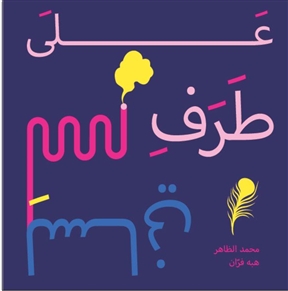
“I’m always there, decorating the wall/ but I can see you whenever you come to look at me/ who am I?” a collection of rhymed riddles that encourages children to think and to imagine.

“I’m always there, decorating the wall/ but I can see you whenever you come to look at me/ who am I?” a collection of rhymed riddles that encourages children to think and to imagine.
The poetic puzzle is a literature genre in Arab culture. There are many poetic puzzles that children have learned for generations. The poetic puzzles for children has, in general, tangible descriptions (its shape, color, taste, environmental sphere…) or practical descriptions (its uses). Those ...
Read MoreDear Parents,
The poetic puzzle is a literature genre in Arab culture. There are many poetic puzzles that children have learned for generations.
The poetic puzzles for children has, in general, tangible descriptions (its shape, color, taste, environmental sphere…) or practical descriptions (its uses). Those descriptions help the child to understand the poetic puzzle, as it demands also thinking abilities such as categorizing and generalizing. In general, children develop these abilities by the age of 5. That is why children under the age of 5 usually find it hard to understand poetic puzzles.
How can we, as parents, help our children to understand the poetic puzzles in this book?
In order to develop children’s abilities to understand poetic puzzles, you can play together “Let us figure this out”. All you need to do is ask a child to look around and ask the following: what thing among the furniture, is yellow, made of wood, and we use it when we want to rest?. This type of method helps the child to understand the poetic puzzle especially when you describe from the general to the specific, which means its belonging to a specific group (furniture, bird, food…), and then to specific characteristics (its color, taste, shape and function…).
Children enjoy making their own poetic puzzle to challenge us.
We share with you our suggestions to read the poetic puzzles with your children…
لأحاجي- أو الحزازير باللّغة العامّية- صنفٌ أدبيّ يضرب جذوره في تراثنا الشّعبي. وهي في الأساس نصوص ذات قوالب ثابتة، مسجوعة في الغالب، وتتناقلها الأجيال بنفس نصّها الأصلي تقريبًا. وتهدف "الحزّيرة" إلى التّسلية، وتنشيط الذّهن والتّفكير. هل تذكرين بعض هذه الحزازير:
- طاسة طرنطاسة في البحر غطّاسة، جوّاها لولو وبرّاها نحاسة
- شعر منتوف، لا هو قطن ولا صوف
- حامل ومحمول وناشف ومبلول
- خذ منّه بكبر، وحطّ فيه بصغر
وغيرها من الحزازير التي يتمتّع بها الكبار والصّغار.
يستطيع الطّفل فهم الأحجية، أو الحزّورة- على عتبة سنته السّادسة. والسّبب في ذلك أنّ الحزّورة تعتمد في معناها التّورية البلاغيّة، أيّ أن تحمل الجملة معنيين: أحدهما مباشر وأقرب إلى الذّهن لكنّه غير مقصود، والثّاني أبعد لكنّه المقصود. هذه قدرة متطوّرة في التّفكير لا يمتلكها طفل الرّابعة أو الخامسة الّذي ما زال يدرك الأشياء من حوله على نحوٍ محسوس.
يستلزم حل الأحجية أيضًا معرفة حياتيّة، فحتّى يعرف الطّفل أنّ المقصود "بالشّعر المنتوف والذي هو لا قطن ولا صوف" هو الثّلج، يلزم أن يكون الطّفل قد انكشف لمادّة الثّلج، وكوّن مفهومًا ذهنيًّا لها.
والأحجية تتطلّب قدرة تفكير أخرى، هي التّصنيف وفق معايير معيّنة. فكي يصل الطّفل إلى حل أحجية الحيّة في كتابنا، يلزمه أن يفكّر أوّلاً بالحيوانات التي تعيش في جحور، وهي كثيرة، ممّا يصعّب عليه تخمين الإجابة. تضيق دائرة تخمينه حين يخبره النّص أنّها ملساء، طويلة، ومشهورة بسمّها، وملتوية. رويدًا رويدًا يجمع الطّفل أجزاء المعلومات- كما في لعبة البازل- ليركّب منها إجابة الأحجية.